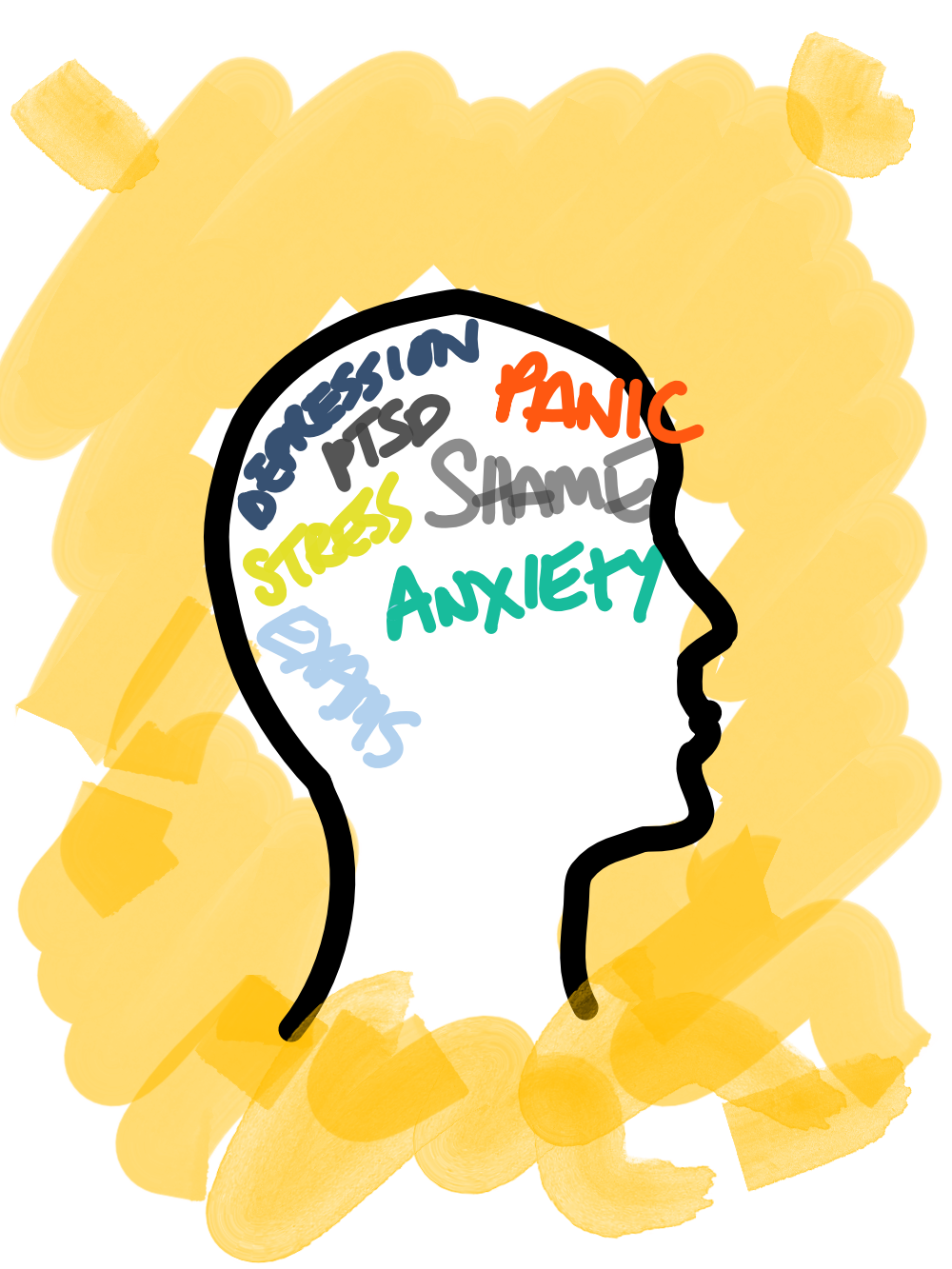The
 blog
blog
Managing student wellbeing with data
1st February 2019 | Mike WilliamsA student's wellbeing
Wellbeing is based around the sense of comfort, happiness and security in one’s surroundings. Having a good state of wellbeing creates conditions to learn, to be creative, and to cope with the many obstacles a student faces in their academic career.
Some students will have a good state of wellbeing, having a naturally positive disposition and being self-driven, but others will struggle to maintain or acheive this state without proper support and guidance.
Wellbeing walks hand in hand with mental health. If you have a healthy brain, you quite often have a good state of wellbeing. You feel good about yourself and can cope with most situations life throws at you. If you struggle with a mental illness, this can often hamper your wellbeing and make it harder to reach that state where you work best.
So, it is safe to assume wellbeing and mental health are hugely important factors in a students academic career - emotions linked to wellbeing affect how we work, learn and reach our potential. Its correlation with academic performance is becoming more and more established. As mental health and wellbeing loses its stigma, the field has opened up and we are beginning to understand the true impact wellbeing and mental health can play in academic development.
How is wellbeing changing in schools?
The observed increase in mental health issues in schools and colleges is in part due to more widely available services and a more accepting society, allowing more students to come forward and talk about mental health and wellbeing. However, it is likely this is paired with an genuine increase in mental health issues, especially anxiety driven by the increased pressures to perform and reach academic targets. In a recent study conducted by Journal of American College Health, researchers found a significant increase in the diagnosis and treatment for eight of the 12 mental health conditions examined, with the biggest increases in anxiety, depression, and panic attacks. (4)
The issue is being more widely acknowledged by the UK government, with £300 million of funding earmarked to provide better support in tackling the problem in UK schools. (2)
How does wellbeing actually affect attainment?
There are a plethora of studies that show state of mind, wellbeing and mental health have a tangible impact on attainment. It seems obvious, feeling good makes us work better (!), but surprisingly, this is a relatively new revelation - especially in schools.
According to UK charity Place2Be’s one-on-one counselling service in primary schools, for every £1 spent tackling mental health issues, the return (in terms of better student job prospects, lower rates of illness and crime) was equated to £6.20 – a six fold return. (2)
In a US study it was found that students that took part in a social and emotional learning (SEL) programme, designed to help improve wellbeing and mental health issues, demonstrated significantly improved social and emotional skills, attitudes, behavior, and academic performance that reflected an 11 percent gain in achievement. (6)
If we look beyond schools and colleges, it is estimated that globally, the cost of poor mental health on productivity amounts to nearly US$2.5 trillion a year. (2)

Methods to improve wellbeing in the classroom
As wellbeing and mental health are becoming more common talking points in schools, more methods are being explored to improve wellbeing in the classroom:
- Listen and learn - Listening to students and understanding their issues, why they are struggling and how you could help.
- Change the culture - Often it is stigmatised to talk about why you are struggling. Creating an atmosphere where it is OK to talk about mental health can help students address any issues they might be coping with.
- Positivity - Positivity is infectious! It works like a chain reaction, promoting positivity in one student can encourage positivity in others.
- Time away from tech - With the advent of social media, it is increasingly common for students to feel marginalised and self-aware.
- Integration - Promoting integration and relationships amongst your students.
- Ask the question - Make talking about issues the norm. This starts by asking questions.
- Change the definition of success - Success shouldn't just be about an academic level, rather a target relating specifically to a student.
- Exercise - Like meditation, exercise has been shown to boost the levels of alpha waves in the brain, a sign of relaxation(5).
- Evaluate and assess - Keep a track of the effectiveness of what you are doing to promote wellbeing.
Using technology to understand and improve student wellbeing?
So, to the original point of this article - how can we use data and tech to help understand student wellbeing? It starts with tracking relevant information - relating to performance, attendance and behaviour.
It then requires us to identify cues in that data that could signpost issues relating to student wellbeing:
- Falls in performance - sudden falls and consistent declines (Looking at the correlation of results can be useful for this).
- Increase in behavioural concerns.
- Falls in attendance.
- Sporadic performance and behaviour.
- Lateness to lessons.
- Failure to meet targets.
Although a very new field, there are some examples of learning analytics solution that are being implemented in universities - joining the dots between attendance, academic performance, health visits - and alerting counsellors of warning signs. It is clear that this is not designed to replace humans as a source of counsel for students, rather optimise the the process of identifying students in need. (1)
Data is being more widely accepted as a tool to help with pointing educators in the right places to tackle mental health and wellbeing issues and can be an extremely powerful and impressive resource. But it is also widely maintained that this must to be paired with forming good relationships with students, observing behaviour, relying on instincts, listening and understanding.
Finally
It is hard to get empirical evidence of a causality between wellbeing and attainment - it is not black and white. What we can say with some confidence is there is a connection and exploring the nature of that connection, be it on a student by student basis or through whole school policy change, can be used to improve attainment.
So, data alone will not improve wellbeing and shouldn’t be seen as the panacea (at least until AI makes us all obsolete). But, it can create far more opportunities to intervene in a students educational and developmental journey!
What we try and do at Vizi is take the effort out of recording this data and give ample opportunity for the correct person to make the correct intervention. Please get in touch to find out more -> mike@vizi.education
References
- 1) https://www.theguardian.com/education/2018/oct/08/student-suicides-the-bereaved-father-who-says-data-could-save-lives
- 2) https://www.relocatemagazine.com/education-under-pressure-student-wellbeing-moves-to-the-top-of-the-agenda-hc-au18
- 3) https://www.place2be.org.uk/
- 4) https://www.eurekalert.org/pub_releases/2018-10/tfg-sii102218.php
- 5) https://www.ncbi.nlm.nih.gov/pmc/articles/PMC4338399/
- 5) https://www.ncbi.nlm.nih.gov/pubmed/21291449/
Other articles you may be interested in
25th November 2021 10 mins
Blog post
12th October 2021 10 mins
Blog post
Exams 2022 - have your say
Read more15th January 2020 10 mins
Blog post
Data driven schools
Read more3rd December 2019 10 mins
Blog post
Peer to peer grading
Read more7th August 2019 5 mins
How to
Setting targets and metrics
Read more7th June 2019 10 mins
Blog post
Encouraging marking standardisation
Read more4th December 2018 10 mins
How to
Creating a seating plan
Read more2nd August 2018 10 mins
How to
Using assessment breakdowns
Read more30th June 2018 5 mins
How to
Creating an assessment
Read more20th July 2017 10 mins
Blog post